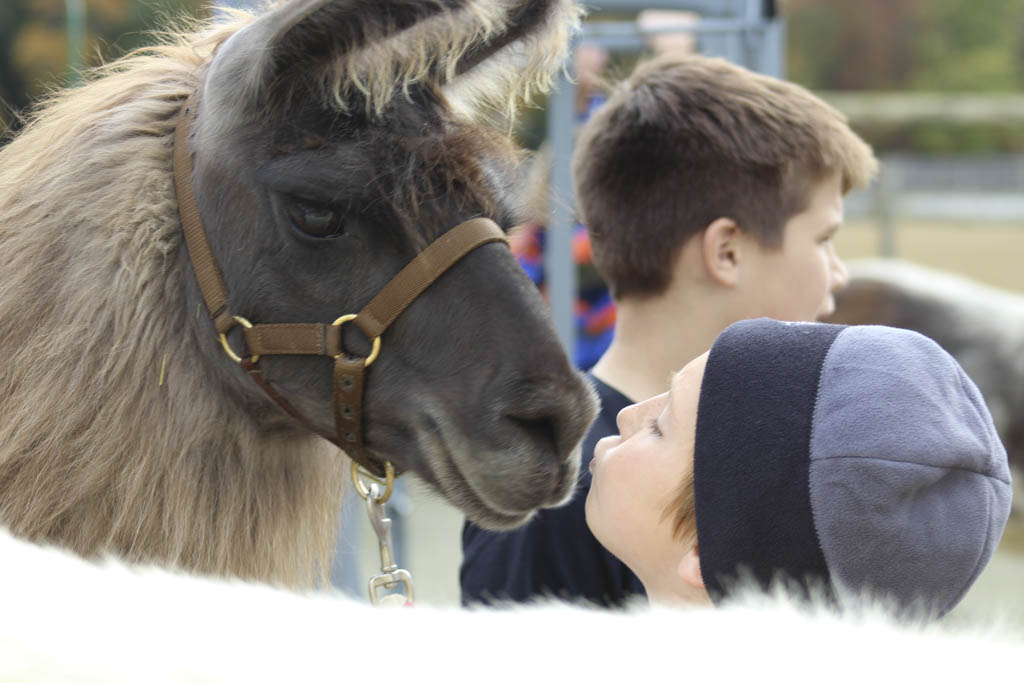By Christine Barcia
Staff Writer
PLUMSTED – Faced with an empty nest, Bev Vienckowski knew what she wanted to do next in life.
“I wanted to live a green and more sustainable life,” she said.
Vienckowski found that life on a 3.5-acre farmette in New Egypt. She and her husband, Ed, bought the farm in 2007 and started to fill it with llamas. Over the course of four years, five llamas found a home with Vienckowski at her farm and in January 2015, Second Wind Llama Adventures opened.
“I went on a llama quest. My whole vision was to become competent with llamas and come into ecotourism,” Vienckowski said.
That quest included five years as editor of the Pennsylvania Llama Letter, a role she said helped her gain knowledge and confidence.
Vienckowski now shares her llama expertise with visitors to the farm, where guests can walk the llamas through a trail. Her program, Meet the Llamas, can be anything from a haltered walk inside the pasture to a two-and-a-half hour hike along a trail. Walks and farm visits are suited to all ages, from children to seniors, and to individuals who have special needs.
Kathleen D’Aulerio of Chesterfield has visited the llama farm a few times with her children, Olivia, 11, and Michael, 10.
“They call my son the llama ambassador. He wants to own a llama farm. He researches about the food and the land,” D’Aulerio said.
Olivia and Michael enjoy brushing the llamas and walking them along the trails.
The children, D’Aulerio said, are attracted to the “gentle and loving” nature of the animals.
“It is my goal to make everyone feel welcome and safe. The terrain here is relatively flat. The trail begins through a wooded area at scenic Colliers Mills and meanders quietly among lakes and cranberry bogs. Our five halter-trained, gentle llamas – Gunner, Carbon, Jim-E, Clemente and Eduardo, regularly go on day hikes with people of all ages,” Vienckowski said.
She also briefs visitors on llama psychology and farm safety. Llamas, for example, do not bite, but they do spit at each other as a form of communication.
“It’s a very special time when you choose your llama partner or they choose you,” Vienckowski said.
Most guests, Vienckowski said, find the llamas “bigger than expected,” as the animals average between 350 and 475 pounds.
In the winter, she feeds the llamas hay and grain, and the rest of year they live off the pasture. The lifespan of a llama is 20 years.
Vienckowski chose llamas over alpacas because llamas are less expensive (about $2,000 each) and more domesticated.
According to the Second Wind Llama Adventures website, llamas, alpacas, guanaco and vicuna are all camelids. They are descendants of the desert camels who adapted to life in the Andes Mountains when the continents of Africa and South America drifted apart.
For more information, visit www.secondwindllamas.com

